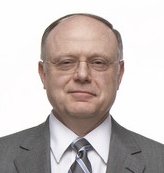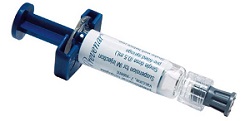 |
| Pfizer CEO Ian Read |
Pfizer ($PFE) came through a hectic fourth quarter with a major deal pending and at work on integrating an earlier one while at the same time trying to identify niches for both in emerging markets and particularly China.
It's no secret that the pending deal with Allergan ($AGN) faces close scrutiny by the U.S. Treasury and related regulators, while the acquisition of Hospira remains a work-in-progress.
But Chairman and CEO Ian Read and his executive team said that even with those issues, the hard work of integrating operations and products across emerging markets is already underway.
At the same time, the company outlined an $800 million hit in 2016 from a massive currency depreciation in Venezuela linked to weak global oil prices.
Read, like executives at Abbott Laboratories ($ABT) and Roche ($RHBBY), however, said there were no plans to curb operations in Venezuela and the company would await a return to better economic times.
On the Feb. 2 earnings call, John Young, group president of Global Established Pharma Business, pointed to Hospira's biosimilar and injectables portfolio as widening the scope of market penetration in China and emerging markets.
"So the biggest opportunity we have is China, it's going to take time, drug lag in China is a significant issue, but we're very encouraged by the progress that the CFDA are making to accelerate access to important new medicines in China--although it will take time," Young said.
Read echoed those comments noting that in emerging markets legacy Hospira products took up slack.
"During the year in emerging markets, we saw operational revenue growth primarily due to the performance of Prevnar (Prevenar 13 in some countries outside the U.S.), Lipitor and Enbrel, as well as from the addition of legacy Hospira products," Read said.
Overall, emerging market revenues rose 7% and 3% in constant currency, reaching $11.1 billion in 2015.
Frank D'Amelio, chief financial officer, said that global vaccine revenues grew 53% operationally, driven by a 102% increase of Prevnar 13 in the U.S., and like Read noted that "the inclusion of legacy Hospira operations and continued strong growth in China, offset by declines in certain markets in the Middle East."
 Still, there was no mention of the state of play for Prevnar 13 in China, where in April last year it halted vaccine operations following failure to get a license renewal for its existing Prevnar shot and Prevnar 13 awaited approval.
Still, there was no mention of the state of play for Prevnar 13 in China, where in April last year it halted vaccine operations following failure to get a license renewal for its existing Prevnar shot and Prevnar 13 awaited approval.
The company also faces possible competition from Chinese vaccines producer Sinovac ($SVA), which laid out R&D plans last year to test a pneumococcal 13-valent conjugate vaccine candidate that has the potential to challenge Pfizer in the Middle Kingdom and abroad.
But overall D'Amelio said that in the fourth quarter China grew 10%. Full year, China grew about 10%.
"Nice numbers," he said. "Somewhat moderated from 2014. In 2014, China grew at about 15%. So we saw some moderation in the growth in China."
Young also talked about the regulator outlook, though there was no mention of manufacturing troubles flagged by the U.S. FDA at Zhejiang Hisun Pharmaceutical, a joint venture with Pfizer.
"We're very encouraged by steps that we see the government taking, and the regulatory environment to really enhance quality standards in the marketplace," Young said.
"And whilst there are a few headwinds, GDP growth is slowing but still positive, still mid-six single digit percentages. We are seeing some pressure in pricing. But overall, when you put all of those factors together, we continue to see China being a very positive growth driver."
On Allergan however, Read said it's still too early to discuss any specifics, but noted that the company's footprint in Asia is limited and that provides scope for growth.
- here's the release (PDF)